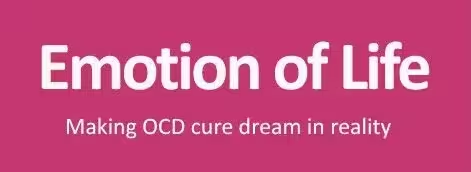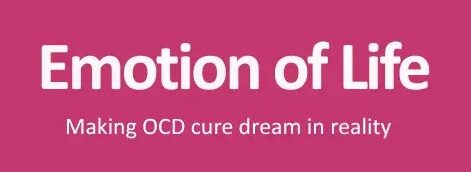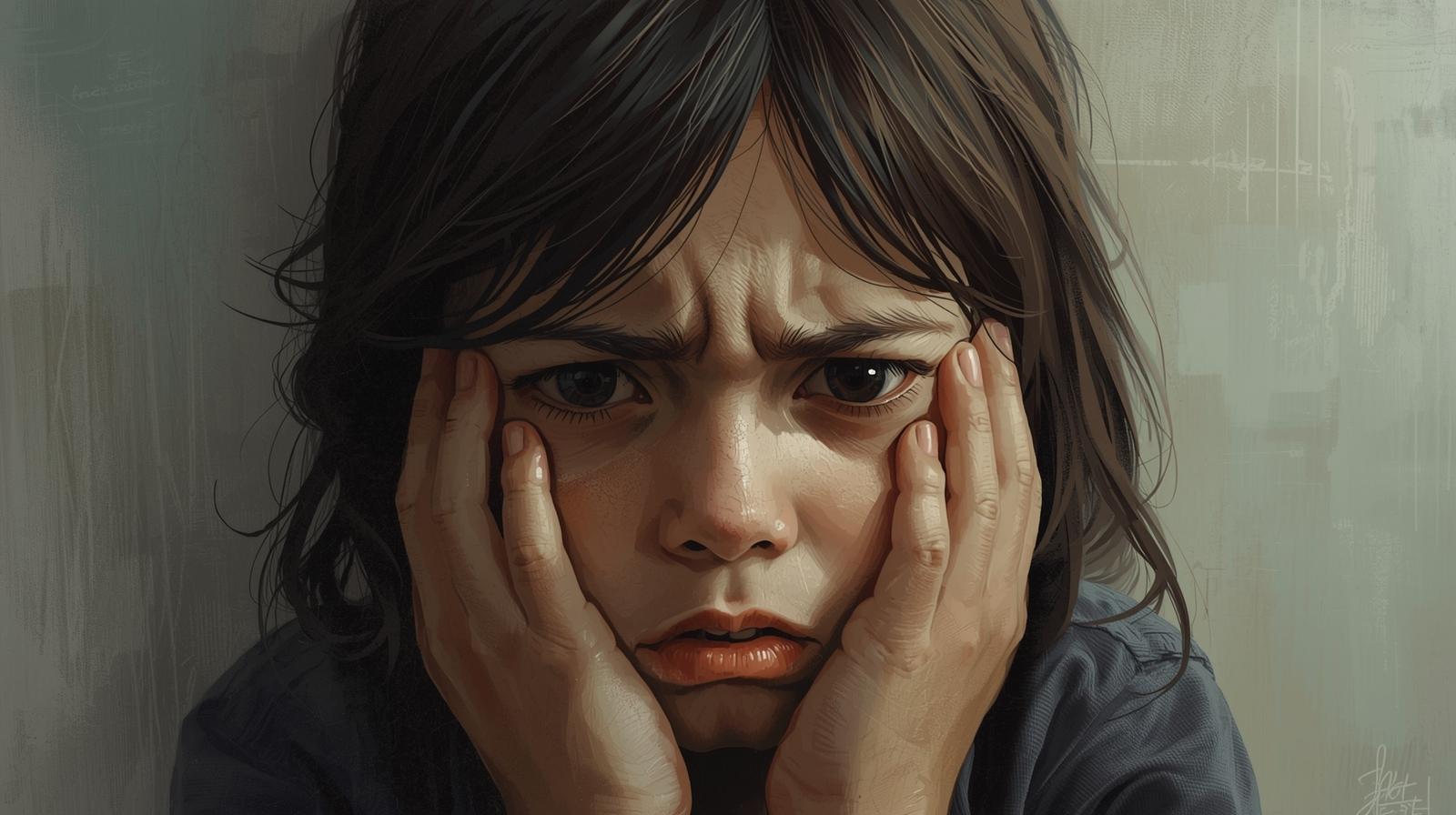- Common Signs and Symptom
- Why Children Develop Existential OCD
- Impact on Mental Health and Daily Life
- Treatment Options for Existential OCD in Children
- How Parents and Caregivers Can Help
Existential OCD in children is a type of obsessive-compulsive disorder marked by overwhelming, intrusive questions about existence, meaning, death, and self-identity. Unlike typical curious inquiries children might ask and quickly forget, these thoughts are distressing and persistent, leading the child to engage in compulsive mental or behavioral rituals in an attempt to find certainty. Terms like existential OCD, fears about the meaning of life, death anxiety, and intrusive existential doubts are crucial to understanding this condition, as they demonstrate how the child’s thinking becomes fixated on profound, abstract issues that disrupt their daily life. For instance, a child might continuously wonder, “What if I don’t really exist?” or “What happens when I die?” and then seek constant reassurance, consult religious texts, or perform mental rituals to alleviate the anxiety these thoughts provoke. When these intrusive thoughts interfere with play, school activities, and relationships, and when the child feels driven to act on them, it signifies a clinical condition that can significantly benefit from compassionate, evidence-based interventions.
Existential OCD in children typically emerges around the onset of abstract thinking, generally during middle childhood or early adolescence, though it can manifest earlier in particularly introspective children. Important concepts include existential doubt, reality-checking, and moral concerns, which reflect the child’s experience: they may constantly question whether their parents genuinely love them, whether the world is “real,” or if their actions hold any lasting significance. Unlike regular philosophical questioning, which tends to be flexible and open-minded, existential OCD in children is characterized by rigidity and heightened anxiety, often accompanied by a sense of catastrophe and compulsive actions.
SYMPTOMS OF EXISTENTIAL OCD IN CHILDREN
Physiological symptoms:
existential OCD in children triggers classic anxiety symptoms. Children often report experiencing tightness in the chest, stomach pain, headaches, rapid heartbeat, sweating, and disrupted sleep when confronted with existential doubts. They may become hyper-aware of bodily sensations, such as listening to their heartbeat to “confirm” they are alive or constantly checking their ability to move their fingers as reassurance of their existence.
Psychological effects:
can be profound, including ongoing rumination, a deep fear of meaninglessness, significant doubts about their identity, perfectionistic or moralistic attempts to “prove” their worth, and compulsive behaviors that may be either mental (counting, repeating prayers or phrases, mental reviewing) or physical (asking the same questions to trusted adults, seeking reassurance, avoiding conversations about death or reality). As a result, children may withdraw socially, lose interest in play, and see a decline in academic performance due to their mental energy being consumed by existential checking.
TYPES OF EXISTENTIAL OCD IN CHILDREN
Existential OCD in children manifests in various themes, with one common aspect being death anxiety. This includes persistent and intrusive fears about either one’s own death or that of loved ones, often resulting in behaviors aimed at seeking reassurance or checking in on others, such as repeatedly asking about a parent’s well-being or making consecutive phone calls. Another variant relates to identity and existence, where a child questions their own reality, genuineness of feelings, and responds by performing mental rituals to verify their reality. A third theme involves feelings of meaninglessness or nihilism, where the child experiences an overwhelming dread that life lacks purpose, causing them to avoid previously enjoyable activities or compulsively seek sources of meaning. A fourth theme pertains to spiritual or cosmic uncertainty, where religious or metaphysical inquiries lead to compulsive behaviors such as excessive praying, confessions, or ritualistic actions aimed at achieving certainty. These themes can often overlap and evolve over time based on developmental factors, stressors, and familial reactions.
CAUSES OF EXISTENTIAL OCD IN CHILDREN
The causes of existential OCD in children are complex and varied.
Psychological causes:
children who are introspective, extremely vigilant, or intolerant of uncertainty are at greater risk. Cognitive factors such as thought-action fusion, which involves thinking something makes it true, and the catastrophic interpretation of uncertainty as unbearable, contribute to the disorder.
Social causes:
Family responses also play a crucial role; anxious or overly protective reactions, frequent reassurance, and a strong focus on certainty can inadvertently reinforce compulsive behaviors.
Environmental stressors:
such as loss, family illness, significant life changes, exposure to graphic media, or intense philosophical discussions in school, can trigger symptoms.
TREATMENT OF EXISTENTIAL OCD IN CHILDREN
Assessing existential OCD in children demands sensitivity and skill. Younger children may struggle to articulate abstract feelings, so clinicians observe behavioral indicators like repeated queries about death, excessive checking, avoidance of nighttime routines, reluctance to view death-related media, or excessive rituals such as reciting prayers or counting. Older children and adolescents might better express their doubts but could conceal mental rituals such as silently repeating phrases or replaying interactions. A comprehensive history is crucial, examining thought content, the child’s coping mechanisms to alleviate anxiety, functional impairment, and any concurrent issues like generalized anxiety, depression, or traits associated with autism that influence treatment. Additionally, safety evaluations concerning suicidal thoughts are critical; children with obsessive death-related thoughts tend to fear death rather than be drawn to it, necessitating thorough checks and plans for safety when needed.
Cognitive Behavioral Therapy (CBT):
Effective treatment for existential OCD in children involves a customized, multi-faceted approach, with CBT at its core. CBT assists children and their families in recognizing the cycle of obsessions and compulsions, where intrusive existential thoughts lead to anxiety that is temporarily alleviated by rituals, ultimately perpetuating the cycle. Through CBT, children learn to challenge catastrophic beliefs about meaning and existence, such as assessing the notion “If I can’t determine the meaning of life, then life is meaningless” with balanced arguments and behavioral tests. Therapists utilize age-appropriate metaphors, like likening thoughts to passing clouds to normalize experiences and reduce feelings of shame.
Exposure and Response Prevention (ERP):
serves as the behavioral foundation for fostering change. In treating existential OCD in children, ERP involves systematically confronting distressing thoughts and situations while preventing the child from engaging in their usual neutralizing rituals. For example, a child who frequently asks their parent, “Do you love me?” might practice enduring uncertainty by postponing the request for reassurance or only asking once and then participating in a meaningful activity despite lingering doubts. Similarly, a child fixated on questions about death could be encouraged to read an age-appropriate text addressing life’s uncertainties and then resist the impulse to mentally recite comforting phrases.
Acceptance and Commitment Therapy (ACT):
complements ERP by transforming the child’s perspective on existential thoughts. ACT promotes mindfulness, learning to observe thoughts without becoming attached to them, and cognitive defusion techniques, which help the child recognize thoughts as mere mental events so that intrusive doubts lose their power. ACT also focuses on values: assisting the child in identifying what truly matters to them (such as friendship, curiosity, and creativity) and encouraging actions that align with those values despite ongoing existential concerns. For instance, a teenager preoccupied with questions about meaning may still decide to volunteer at a community center, prioritizing connection and kindness over fleeting certainty.
Wellness coaching:
serves as both a guiding principle and a life philosophy that enhances therapeutic progress. For children, it emphasizes the importance of regular sleep, nutritious meals, physical exercise, limited late-night screen time, and participation in fulfilling hobbies. Practical strategies might involve establishing a calming bedtime routine to minimize night-time anxiety (such as reading soothing stories, practicing deep breathing, and using a “worry box” for thoughts until morning), scheduling creative playtime to reconnect with joy, or setting limits on philosophical media consumption. Wellness coaching reframes recovery as not just the reduction of symptoms but as the development of a fulfilling life where meaning is explored gently.
Personality dynamics course-correction:
plays a crucial role in customizing treatment to each child’s temperament. Existential OCD in children often result due to reflective, sensitive, and ethical traits, qualities that can be seen as strengths. A brief module on personality dynamics may help children recognize that their sensitivity fosters empathy and creativity, while also teaching families how to promote curiosity without reinforcing compulsive behaviors. For instance, parents can encourage balanced philosophical discussions by reading age-appropriate literature about profound topics and modeling a comfort with uncertainty instead of constantly alleviating the child’s discomfort.
Building healthy coping mechanisms:
is an ongoing process that occurs daily. Techniques might include identifying intrusive thoughts, practicing grounding exercises (using the 5-4-3-2-1 method), creating designated “worry periods” (like a 10-minute “wonder time”), and swapping mental rituals for tangible activities (such as drawing, journaling, or going outside). Schools can assist by offering quiet spaces for children to regroup during moments of heightened existential anxiety and by collaborating with therapists on manageable exposure tasks within the classroom. Parents are encouraged to show brief empathy followed by redirection, while minimizing reassurance that can reinforce compulsions.
Improving emotional and mental health:
is essential for recovery. Therapy helps address concurrent anxiety and depression, enhances sleeping patterns and daily routines, rebuilds social confidence, and rekindles curiosity and playfulness. Family therapy aids in reducing accommodation behaviors and teaches steady, compassionate responses. Over time, children discover that intrusive existential thoughts don’t require immediate resolution; they can lead fulfilling lives focused on values, relationships, and curiosity, even in the face of uncertainty. The objective is not to eliminate philosophical contemplation but to integrate it into development in a healthy way rather than allowing it to become a source of debilitating fear.
SUCCESS STORY
Aarav, 12-year-old boy, from Delhi was overwhelmed by constant thoughts about death and the meaning of life, keeping him anxious and unable to enjoy school or play. Constant efforts by his parents and different doctors couldn’t control help him when finally his parents approached Mr. Shyam Gupta for help. At Emotion of life, through CBT, he learned to challenge his unhelpful thoughts, while ERP helped him sit with the fear without repeatedly asking his parents for reassurance. ACT taught him to focus on living by his values, and with supportive therapy and routines, he gradually rediscovered joy in school and play.
FAQ
How is existential worry in OCD different from normal childhood curiosity?
While most children ask questions about life and death, children with Existential OCD get stuck in a cycle of doubt and compulsive reassurance-seeking. Unlike normal curiosity, their questions are rigid, repetitive, and accompanied by anxiety and rituals.
What types of Existential OCD do children usually show?
Types include death anxiety, doubts about existence or identity, fears about life’s meaninglessness, and spiritual or cosmic doubts that lead to compulsive rituals like over-praying or excessive reality checking.
How is Existential OCD diagnosed in children?
Diagnosis is made through clinical interviews, observing repetitive questioning and rituals, ruling out normal philosophical curiosity, and assessing how much these doubts interfere with school, play, sleep, and relationships.
How can parents support children with Existential OCD?
Parents can help by reducing reassurance, modeling comfort with uncertainty, encouraging balanced routines, and supporting exposure practices. Calm presence and collaboration with therapists are key.
Can children recover from Existential OCD?
Yes. With early, compassionate, and structured intervention, including therapy, coping tools, family support, and wellness practices, most children learn to manage intrusive existential thoughts and regain joy, playfulness, and healthy curiosity about life.
CONCLUSION
In summary, while existential OCD in children is a serious but manageable condition that can transform healthy curiosity into a cycle of fear and compulsions, a compassionate and developmentally-sensitive strategy, incorporating CBT and ERP to disrupt the obsession-compulsion cycle, ACT to alter the child’s relationship with their thoughts, wellness coaching to enhance everyday life, personality-focused approaches to highlight strengths, practical coping strategies for managing anxiety spikes, and collaboration with families and schools for support, can help most children regain their playful nature, learning, and sense of wonder. If you are a parent, note that seeking early, nonjudgmental support can positively change your child’s trajectory: your calm demeanor, ongoing assistance, and collaboration with trained therapists provide your child the best opportunity to move from being paralyzed by doubt to living a life where profound questions foster curiosity instead of fear.


